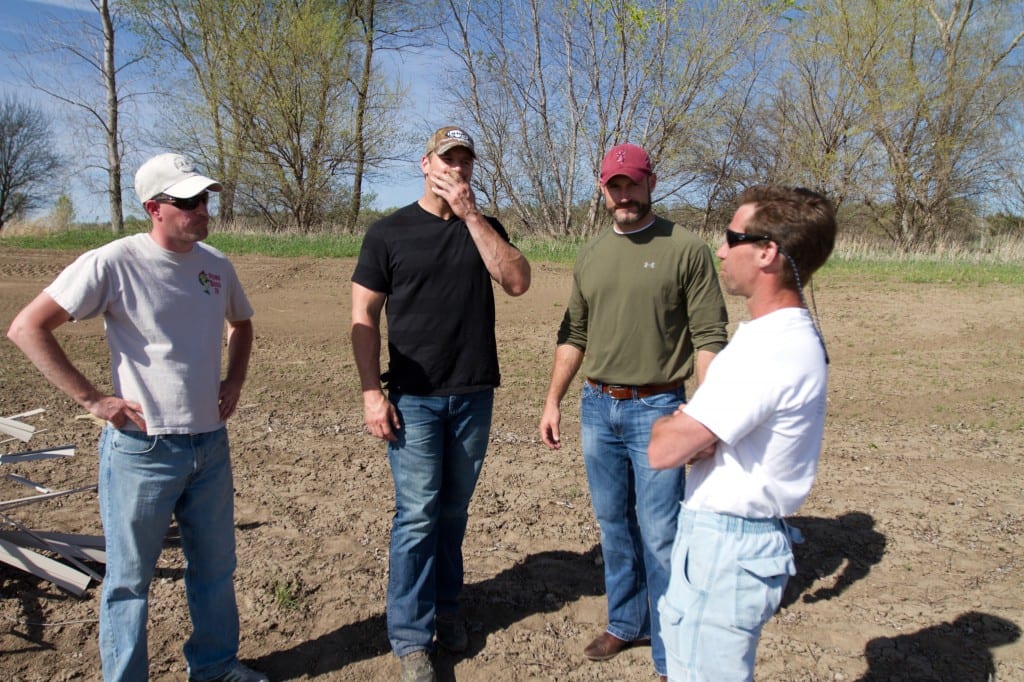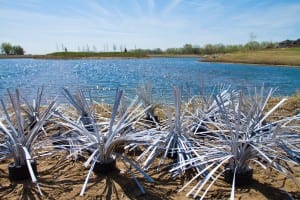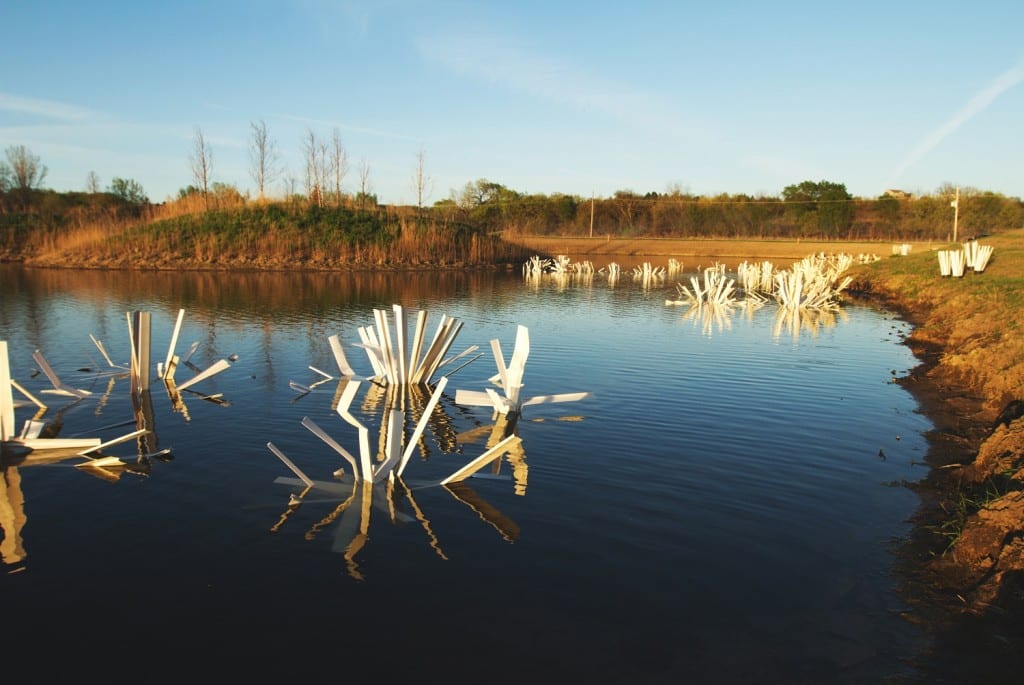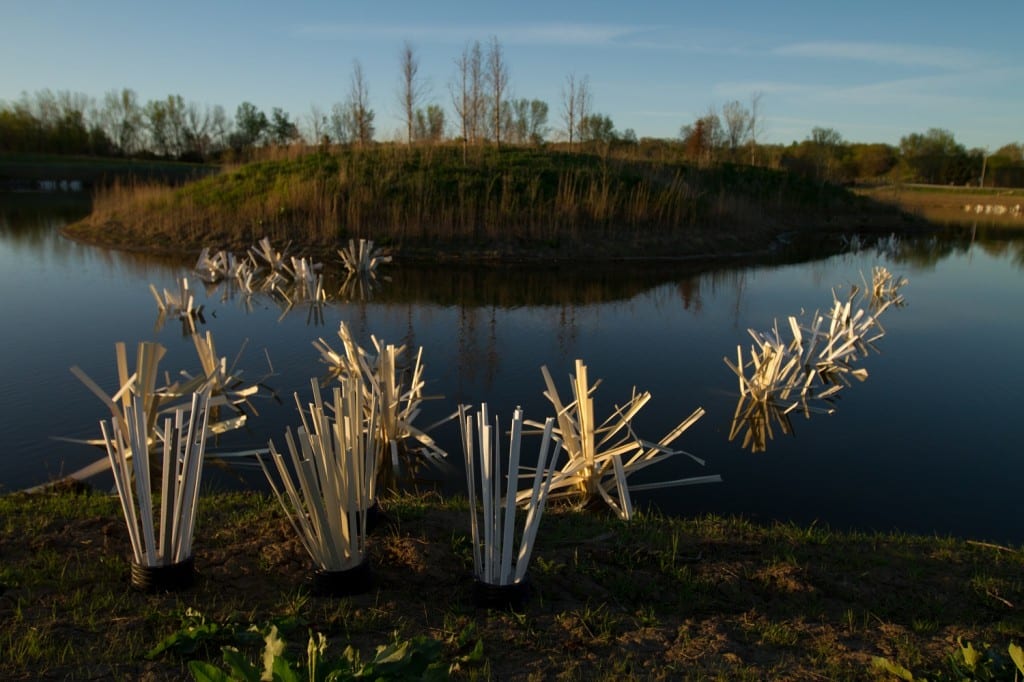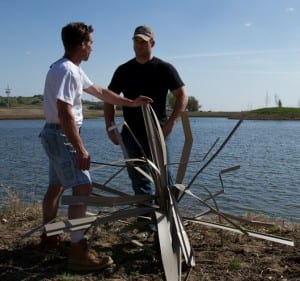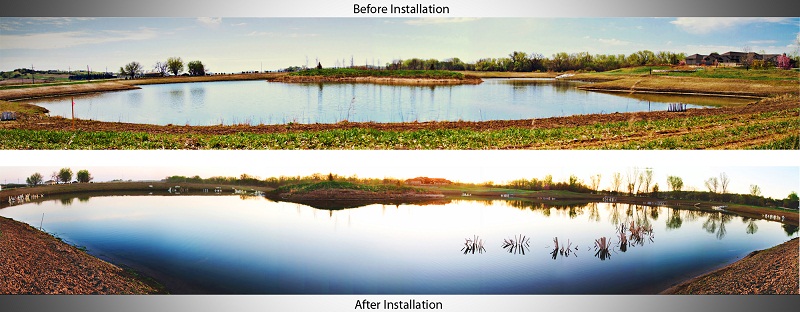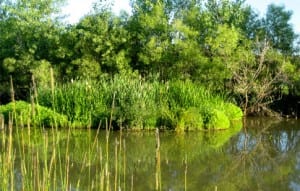| Vince Lovato Editor WASHINGTON, DC – Federal legislation now requires the Army Corps of Engineers to address the safety risks of placing dead trees in Lake Chelan to offset the environment damage allegedly caused by building a dock. The House Appropriations Committee passed a bill April 25 that requires the Corps to address the safety risks to recreational users of woody debris placed in Lake Chelan, according to U.S. Rep. Doc Hastings (R-Wenatchee). “Individuals wishing to construct a residential dock must pass through an exhaustive and very expensive permit process,” wrote boating safety instructor Russ Jones in a guest column to The Mirror. “Yet any agency wishing to deposit non-native species into the lake appear to be able to do so without the simplest of review processes. This was also the case with the use of submerged fruit trees. No prior study was conducted nor has there been any follow up study.” With the dramatic rise and fall of the water level through the different seasons, local residents have raised concerns about the possible movement of this woody debris and the safety hazards that it poses to boaters and other recreational users of the lake, Hastings said. “Washington residents have enjoyed waterskiing, swimming, boating and fishing in Lake Chelan for generations, and it is critical that it remain a safe environment for recreation,” said Hastings, who contributed language in the bill, “I am pleased that the Appropriations Committee acknowledges the need for the Corps to address the safety hazards of woody debris in Lake Chelan and reevaluate its use in the future so Lake Chelan can remain a safe place for Washington families to enjoy recreational activities. Additionally, I question the science and lack of monitoring of large woody debris as a mitigation requirement.” In January 2011, Chelan City Council members unanimously adopted a complicated resolution restricting the use of large woody debris as an environmental offset to construction projects such as boat docks over the lake. “In layman’s language, it would allow large woody debris but only low enough where it won’t interfere with boaters,” said council member Wendy Isenhart at that time. “It’s our responsibility to make policy here and we need an expression of our policy.” Chelan County Commissioners followed shortly thereafter with a similar resolution. Hastings’ language, which was included in the report accompanying the Fiscal Year 2013 Energy and Water Appropriations bill, requires the Army Corps of Engineers to report back to Congress on their efforts to address the safety hazards posed by woody debris in Lake Chelan, the liability of the Corps and private dock owners should a person or property be injured or destroyed by the woody debris, and whether woody debris should continue to be an acceptable option offered for mitigation within Lake Chelan. In March, Hastings, who has long questioned the need to mitigate the impact of docks on fish, submitted a request to Administrator Lubchenco of the National Oceanic and Atmospheric Administration for the science used to determine the impact of docks on fish species. Lubchenco has yet to respond to this request. One prescribed method is to anchor apple trees, referred to as large woody debris, near the shoreline to create artificial fish habitats. The Army Corps of Engineers and the State Department of Ecology created a prospectus that includes research allegedly proving this method would work in Lake Chelan. The agencies call the trees “large woody debris” and fear that every time a portion of the lake is covered by such things as docks, it has a negative impact on the ecology of the lake. Making up for that negative impact, by tethering dead trees near the lake shoreline to create habitat for fish, is called “mitigation.” |
Category: bluegill habitat
NFL Player Chris Kelsay Tackles Fishing Lake Project in Nebraska
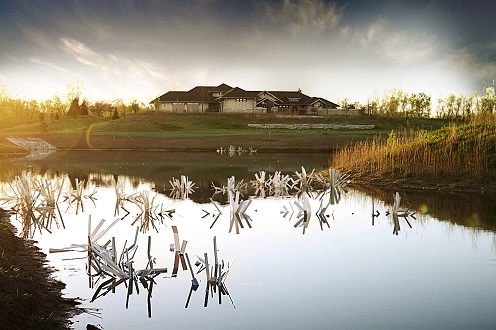
What kind of habitat helps the fish grow large and the water stay clear? Can you actually dictate where to cast your lure to find a bass lurking in the shaded cover like a defensemen reads a quarterback?
If you spend the time and effort to plan the design of your lake or pond from start to finish, you can achieve these goals and much more. Chris Kelsay, veteran linebacker/defensive end of the Buffalo Bills has a passion for more than just football. Chris not only loves to tackle running backs and wide receivers, but big bass are also on the hit list. Growing up in Nebraska, Chris has loved the outdoors all his life. When he’s not playing ball, he’s often talking fishing and hunting with his family and friends, planning his next adventure with his bow, firearms or fishing rods. Chris plays off the field with as much intensity as he does at work, stalking, sneaking and outsmarting his opponents with hard work and dedication.
Another NFL great that is no stranger to the outdoors is Aaron Graham, former Center for the Arizona Cardinals, Oakland Raiders and finishing up his career with the Tennessee Titans. These two guys have quite a bit more in common than playing ball in the NFL. Not only are they neighbors near Gretna Nebraska, but they both love to fish and hunt, having their own private lakes that they enjoy with their families and friends. Both these guys played college ball for the Nebraska Cornhuskers, as well as Chris’ brother Chad. Retiring from the NFL, Aaron now owns and operates his own company called “Premier Outdoor properties”, which specializes in large tract farm, ranch and recreational real estate throughout Nebraska, Kansas, Iowa and Missouri. Participating with Cabela’s Trophy Properties, his firm can help you find your dream hunting and fishing, farm and ranch, lake or river frontage, and large tract acreages, to meet any needs you may have.
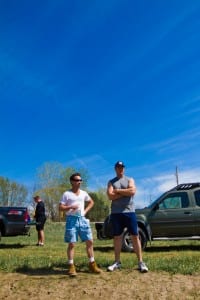
Aaron has had his lake stocked with an exceptional strain of bass, with catches to date over eight pounds by his son Cooper. With the lake being about seven years old, Aaron has a jump start on Chris with some experience in habitat, stocking and water quality. We met Aaron over a year ago, providing him with some of our artificial fish habitat products for his lake. Follow this link to read about aaron’s habitat project. The success he has had with our products, encouraged him to put Chris in touch with the team at Fishiding.com to discuss a plan for his first of two lakes, as it was getting ready to be filled to full pool. With a large well, levelor system, aeration and a stocking plan in place, we came up with a plan and design to meet Chris’ desire to create a personal, one of a kind fishery. The first lake Chris has on his property, at just over six acres, needs plenty of cover for the fish to spawn, hide and hunt within. A well known and respected fisheries biologist Bob Lusk of Pondboss.com, recommends at least 20% of the surface area of a lake or pond be provided in habitat.
See the dozens of unique artificial fish habitat models, fish attractors and fish cover used at fishiding.com, the leader in proven science based, fish protection.
With plans to include aquatic plants, wood and rock, we came up with an array of artificial habitat models to make up about 25% of the needed habitat for Chris’ first lake. We have always felt that a variety of natural and artificial habitat provides the diversity, all types of fish species need to utilize throughout the year. Like most things in life, everything in moderation seems to achieve the maximum efficiency and ultimate benefits for a fishery.
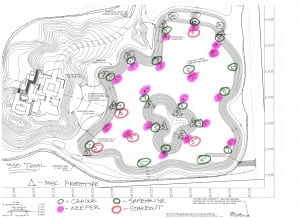
The plan we came up with provided an array of structure textures, sizes and shapes to best provide cover for fish spawning and growing habitats. A total of 350 individual habitat units were hand selected to best achieve Chris’ goals to create a trophy bass fishery. A key element to any habitat plan is to create a line of structure from shallow water spawning areas out to mid depth and ultimately deep water cover. This allows young fry to hide in fine, dense cover immediately after hatching, in the shallow water they are spawned in. As these young of the year fry develop and explore out to mid depth ranges, they need to have cover to utilize as they progress deeper. If this cover is not available, they get eaten before reaching preferred size by predator fish. It is imperative that these small fish are able to hide and grow larger to the 3″-5″ size before becoming forage for the game fish. A bass for instance, needs to eat 10 pounds of forage to put on just one pound in weight. If that bass eats the fry before they get large enough, he will eat them all up just to satisfy his hunger and desire to put on weight.
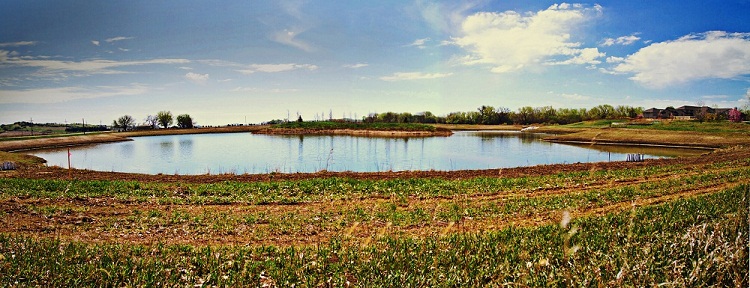
We put our plan together to deliver the structure and help Chris with the installation. Although artificial habitat only needs to be installed once, this was a large amount of structure to ship and install at one time. It was decided we would drive the almost 7200 pounds of habitat out in our own truck and trailer from our facility in northern Illinois. The 475 mile trip had us arriving by lunchtime on a Friday, with the hopes of finishing the installation late Saturday evening, for the return trip on Sunday.
Three of us set out at 4:00 a.m. Friday to achieve our goal. Our son Graham, an electronic media/photography major at Moody Bible Institute in Chicago, came to capture the project in high definition pictures and video and help with the installation process. Also along was our nephew Josh Fick, a starting player for the North Central college football team, over excited to meet and work with the NFL players. Meeting us there was Josh Milczski, a Nebraska native, writer for recycled fish.org, a pond boss moderator and Nebraska Fish and Game board member to lend a hand and share his knowledge. Also on hand to help was Chris and Chad Kelsay, as well as Aaron and Cooper Graham.
We unloaded all 350 units and spotted them around the lake per plan Friday afternoon and then when out for a well desreved Nebraska steak dinner to re-fuel for the big push on Saturday.
The weather was un-seasonably hot, with temps. in the low 90’s and full sun. None of us expected to be getting sun burn in march, let alone starting to find Morel mushrooms already. The turkey were gobbling on the roost as we set up for a long day of work, unfolding each unit and stocking them on the bank near their final resting place. Geese and ducks of all varieties, came in and out of the lake all day, giving us a show of the abundant wildlife in the area. There was about 2 feet of water existing in the lake from runoff and ground water level, an ideal situation to put our plan into motion.
Three Nebraska Boys and one flatlander plan the attack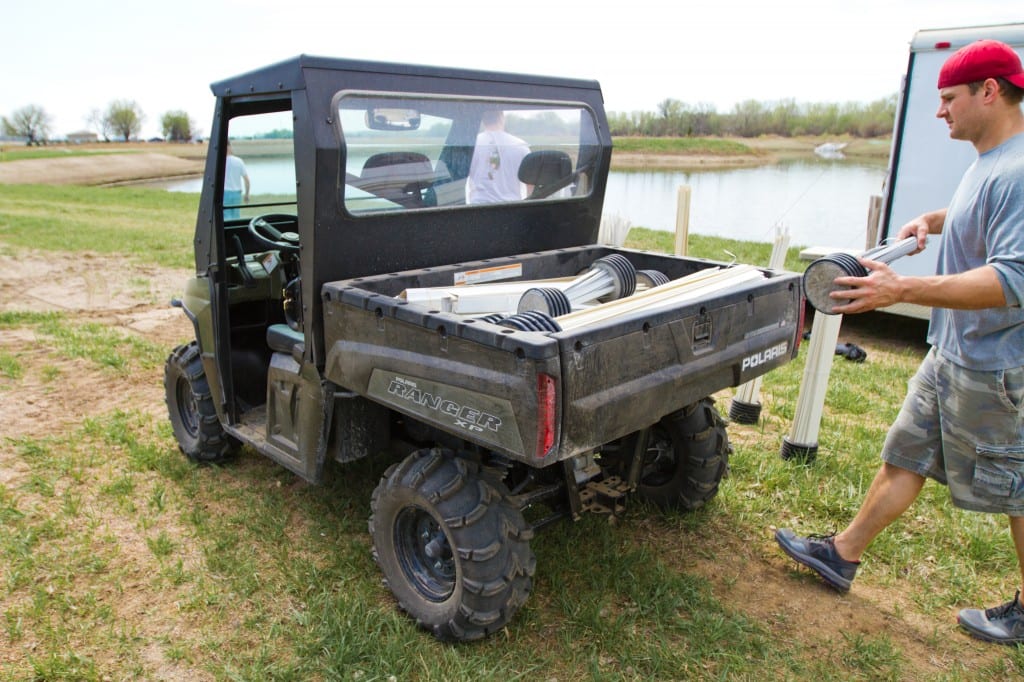
The “Kelsay express” saved lots of time
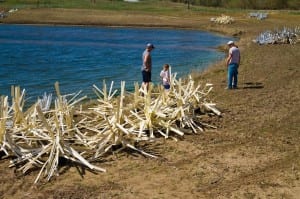
The Fishiding fish habitat products are all made from reclaimed PVC vinyl siding that was destined to be put in landfills. Over 50% of the material acquired has never been used on buildings and will last for many generations to come. This safe, inert substrate, works perfectly for underwater applications in fish habitat. Our main supplier of discarded siding comes from K. Hoving companies. This state of the art waste removal operation currently recycles an astounding 75% of the trash they collect. Re-use is the term they use to explain their company goals. See this story about their firm and the great things they are doing to help our environment. Add the cover and your fish will prosper, Go-Green and save the environment all at the same time.
All fishiding units come complete, ready to sink with no assembly or additional parts/tools needed. Simply open the box, bend to any desired shape and toss in the lake. Each unit sinks upright with the included “stump like” base. There is no incorrect or wrong shape, as diverse as Mother Nature. Artificial habitat products are being used all around the country, as biologists learn more about the many advantages they offer. Years of use from these structures allow anglers and pond/lake owners a snag free habitat for fish to utilize. Saving the environment, these fish attractors help conserve energy with no manufacturing process involved.
Cleaned, cut into various shapes, widths and sizes then cemented into just about any type of safe container, fishing groups are getting involved in creating new habitats lost from degradation and development. All of the fishiding models are available shipped loose as well as in a completed form. Customers can save money by purchasing loose pieces of the PVC in all varities and create their own custom designs by using their own container and cement. A special mixture of cement is also available to ensure a tight, fool proof bond to the vinyl. The pieces and models come in an array of colors, just like the colors available when siding your new home. After the algae and bio film begins to grow, they all take on a greenish/brown appearance.
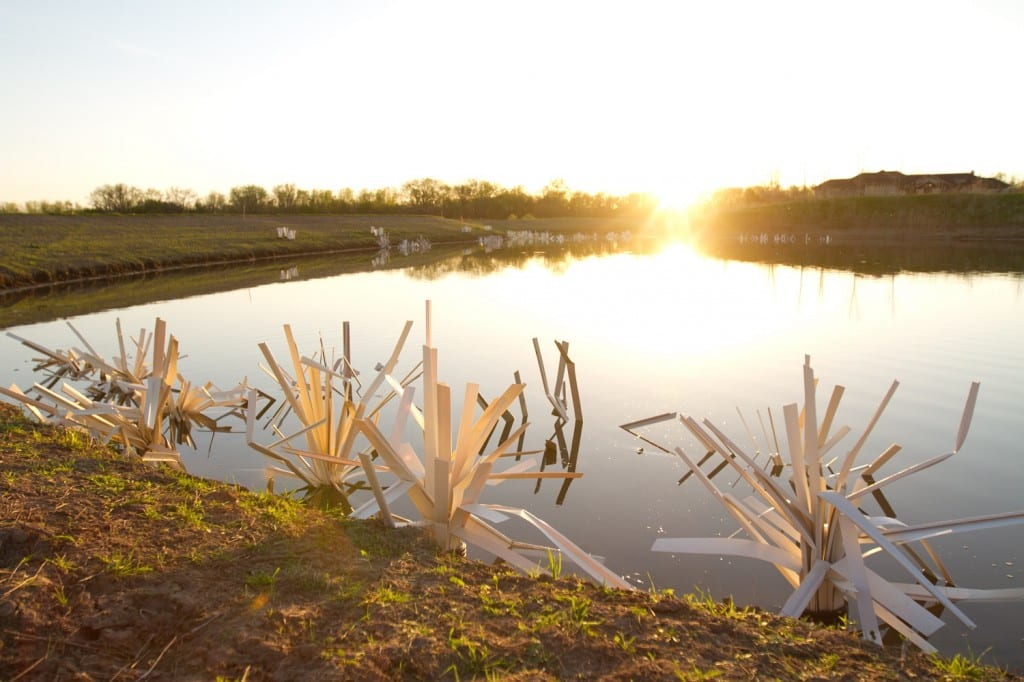
Groups like the B.A.S.S. Federation Nation have begun to incorporate Fishiding habitat products into their ongoing conservation efforts. Projects in West Virginia were recently completed with great success. Plans to work in New Mexico, South Dakota,Virginia and Texas are being put together currently with the conservation directors in those states. The B.A.S.S. Federation Nation leads the industry by example in conservation work with groups in all states and Canada promoting conservation and water quality issues world wide.
Lake and pond owners enjoy the ease of installation, with no need to ever replace. The limbs all have any holes or notches removed to make each unit snag resistant,unlike brush and Christmas trees. By providing shallow habitat for fry and forage fish, mosquitos can be almost eliminated in the area, as they feed on these pesty critters. Shallow habitat is the key to growing your own forage base, thus eliminating the need to constantly restock minnows to feed your game fish.
100 Keeper models were incorporated into the plan for deep water structure. These large units each boast over 62 square feet of surface area and allow predator fish to hunt and hide around. When opened and bent to shape, they cover a seven foot diameter and are best installed with about a foot of space in between. This allows fish to navigate through them, feeding and resting in the shade they produce. Bass prefer the dense cover and shade that these fish attractors provide.
Also part of the plan was to install 25 Stakeout structures, which are artificial stake beds, crappie and bluegill fisherman use a great deal in the south. These units stand 48″ tall and have an open grouping of individual “sticks” that the panfish prefer. Another 50 smaller prototype versions of these were installed in shallow areas for young of the year fish to navigate through as well.
See the dozens of unique artificial fish habitat models, fish attractors and fish cover used at fishiding.com, the leader in proven science based, fish protection.
With all the help and planning, we were able to meet our goal and finish installing all 350 Fishiding habitat units by sundown on Saturday. Chris welcomed us into his beautiful home and surrounding landscape. Although we had no time to hunt or fish while we were there, plans are being made to come back to install our habitat products in his second, five acre lake. With common goals of preserving our natural surroundings and creating a fantastic fishery, we are planning to spend some time together in the great outdoors with bows, guns and fishing rods in hand. New friendships have been made, stories of the hunt continue to be shared and the love of the great outdoors continue to be the catalyst for a common bond between men from all walks of life.
Trading Nutrients for Fish « Floating Island International
The concept of including fisheries management in strategies for water quality improvement is not new, but floating islands give the notion a boost. The simple concept is, add lots and lots of substrate and the fish will come! Catch plenty of fish and you will sequester the unwanted nutrients in a more appropriate part of the eco-system – lunch!
See the dozens of unique artificial fish habitat models, fish attractors and fish cover used at fishiding.com, the leader in proven science based, fish protection.
In a recent article published in Pond Boss (www.pondboss.com) Bruce explores the concept of turning Phosphorus into fish to improve water quality. Here’s a quick link to the article:http://www.floatingislandinternational.com/wp-content/plugins/fii/news/37.pdf
Volunteers brave the cold to create fish habitat
| ||||||||
GRAFTON — A large group of volunteers faced the bitter cold Saturday morning as they gathered at Tygart Lake to anchor recycled live-cut Christmas trees for future fish habitat.
The program started in 2007, as the United States Army Corps of Engineers at Tygart Lake sent out the call for Christmas trees in December. Each year since, the number of donated trees, and the number of volunteers to anchor them, has grown substantially.
See the dozens of unique artificial fish habitat models, fish attractors and fish cover used at fishiding.com, the leader in proven science based, fish protection.
Residents are encouraged each year to drop their live-cut Christmas trees off at the Grafton City Garage after the holiday season. The city then transports the donated trees to the lake, where they are distributed by volunteers.
“This has been a record year for trees and for volunteers,” stated April Hawkey, Tygart Lake Corps of Engineers Park Ranger. “I had an assistant from WVU (West Virginia University) hand out fliers on campus for volunteers. The WVU Fishing Club called and asked ‘how many people do you need?’ that was great, in calling for volunteers, you never know just how many you will get.”
Hawkey stated that 15 volunteers from the club came out to assist with the effort. Along with the fishing club, regular volunteers, who have made this a regular project since the beginning, showed up in force. These regulars are from Boy Scout Troop #6 from Grafton, and the Save The Tygart Watershed Association.
In all, 45 volunteers helped place the trees near the site of last year’s donations.
During what was obviously one of the coldest mornings in February, these brave volunteers met for orientation at the Corps Park Office at 9 a.m.
From there they traveled down to the gravel lot launching area where 400 donated trees awaited. Each tree had to be anchored to concrete blocks strategically located to put the trees about15-20 feet underwater at summer pool levels. Each tree had to be drilled at its base to allow for the zip tie used to attach it to the block.
Volunteers arrived to find the trees awaiting at the top of the launching area. Together they threw, rolled and dragged the trees down over the hill to the staging area below. With Fish Attractor buoys attached, anglers will know where to go to take advantage of these efforts.
The donated trees are anchored along the Tygart Lake shoreline in February, while the lake level is low, so that when the lake returns to its summer levels the trees act as artificial reefs, providing advanced habitat for the lake’s fish and improved fishing opportunities for anglers. Once secured on the lake bottom, the Christmas trees provide shade and a hiding place for fish.
As Hawkey ran the crew up top, making many journeys up and down the steep hill, US Army Corps of Engineers Tygart Lake Resource Manager, Mike Estock handled the efforts down the hill at the staging area.
The success of this program has been noted in various fishing publications. One such mention comes from an April 25, 2010 report at sportfisherman.com, which expands upon the success of the project. “The lake (Tygart) is near the summer pool level. Target largemouth and smallmouth bass by casting crankbaits along the shoreline. Crappie are now concentrated around Christmas tree fish attractors. There are lots of walleye and trout in the tailwater and this is the best place in northern West Virginia to fish for them.”
Trees were donated by Lowe’s, Home Depot, Barbour County, and the cities of Grafton, Nutterfort and Morgantown. The Corps’ staff at Tygart Lake would like to thank those who donated the trees, WV DNR for their cooperation, and all of the volunteers for assisting in the construction of the fish attractor.
After the event, all of the volunteers were treated to pizza. Hawkey also stated that a volunteer appreciation day is in the works, for everyone who helps make Tygart Lake State Park a wonderful place to visit.BY: Matt Trout
Bluegill habitat moves to artificial products to attract more fish
Bluegill Habitat
When you go bluegill fishing habitat is one of the key factors on your mind when deciding where to go to find fish to catch. Some bodies of waters are habitat rich with aquatic plants, dead falls, stumps and so on. Other ponds either never had good structures for habitat or they rotted and decomposed long ago. One option is to sink more structures with items from around the house for little or no cost such as old Christmas trees, pallets or scrap wood formed into a 3D design. These structures are great for a while, but they eventually break down or change until they are no longer a desired location for bluegill to gather.
See the dozens of unique artificial fish habitat models, fish attractors and fish cover used at fishiding.com, the leader in science based, proven, fish protection.
